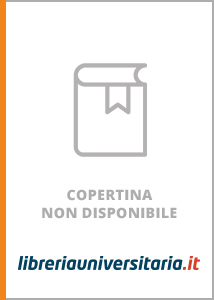Author: Marcia Brown
Illustrator: Marcia Brown
Publisher: Atheneum
ISBN:0689814747
Every fairy tale story begins with the simple words, “Once Upon a Time.” “Once Upon a Time” are the words that catch many readers attention. Many children know right away that they are about to read a fairy tale. One of my favorite childhood fairy tales was “Cinderella.”The beloved fairy tale Cinderella is probably one of the most famous of all time. There have been debates about who wrote the original Cinderella story. Some say it was published by the Brothers Grimm and other say Hans Christen Anderson or Charles Perrault. The Cinderella, that I will be blogging about is the Caldecott Award winner in 1954 which was “Cinderella, or the Little Glass Slipper” by Marcia Brown
“Cinderella or The Little Glass Slipper” is about morality and imagination. The genre of the story is mythology/folktale and the heritage is European. Though Cinderella is mistreated by her step family Cinderella wins the heart of a handsome prince at a ball with the help of her fairy godmother. Moral reasoning of the story is self concern and concern for relationships. The theme of the fairy tale is when things seem difficult you must keep doing the right thing.
Even though Cinderella was treated poorly, she has a good heart. Although, this was an upsetting part of the story there is good that came out of it. What I appreciated most about this story is the magic. The illustrations are full of magic and enchantment, from the little cupids putting back the hands on the clock to the last scene at the palace. These are images that will make a lasting impression on a child. This is what makes Cinderella so appealing to children of all cultures. This rag to riches story has been re-written many times over the years. Children beg their parents to read or tell them the story over and over.
Everyone in the world has a different interpretation of Cinderella. For example, "Yeh-Shen," is a Chinese version of the tale almost a thousand years older than the earliest known European version. This story contains many familiar details like a poor over-worked girl, a wicked stepmother and stepsister, a magical helper, a king in search of a wife, and a lost shoe. However, while Cinderella is simply handed gifts from her fairy godmother, Yeh-Shen earns her wishes through kindness to a magic fish. This one change makes a big difference in the ethical tone of the book.
Even though there are different elements to the Cinderella Story many interpretations agree with the elements in “Cinderella.” The main character is mostly a girl who is badly treated by her family. Cinderella is a good and kind person and since she has goodness she is rewarded with magical assistance. In addition, she is recognized for her worth by something she has left behind, like a glass slipper. She is then seen by a royal person who loves her for her genuine qualities.
Throughout each century, Cinderella opens up new doors for interpretations, styles, presentations, appearances, and meanings. For example, teachers can do a “Cinderella”, Around the World unit. Since there are many versions when teaching a fairy tale like Cinderella children can learn about each one. Students can compare and contrast this tale to other works with the same elements. Children can use a graphic organizer to look at the original and then compare it to another place in the world. This gives children an opportunity to explore and learn about how children in different cultures perceive fairytales.

Marisa- Your post gave a very thorough look at Cinderalla and I felt that the version you selected was a proper choice, considering we have been talking about, learning about and blogging about Caldecott winners over the past few weeks.
ReplyDeleteCinderella is a favorite of many readers, and is one of my favorite fairytales. I find it so interesting to see the various versions of a story told and retold by various cultures and by people all over the world, over the course of many many years. I think you gave a rounded explanation of where the story came from and where it has been.
I like that you compared various versions and also identified what elements of every version have remained consistent in each story, how they are traced back to the original story.
I think it would a very fun idea while discussing fairytales with students and sharing this version, and others to have students write write their own version of Cinderella. I think this is an idea that would of course need to be modeled and would take a great deal of time, but I think that the end result would be amazing. Students could change setting, characters, modernize situations in the story, etc, as long as they carry some elements of the original story and that it can be traced back to the original in some way. You hear all the time the expression "a Ciderella story", so I think that would be a fun idea.